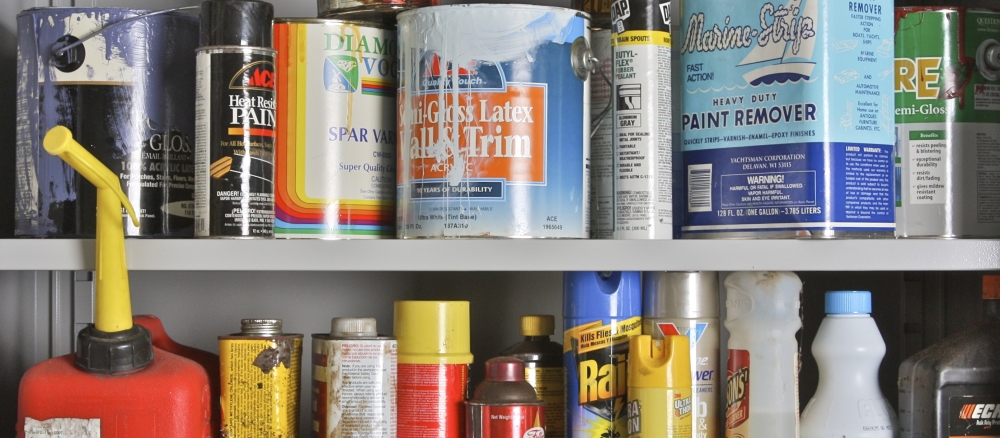Some household consumer products contain chemicals that can pollute the environment and pose a threat to human health once they enter landfills or solid waste incinerators. While industrial sources of hazardous waste are strictly regulated, we rely on residents to identify and properly dispose of household hazardous waste. Do not throw any hazardous waste in the trash; instead, bring it to a local collection site.
Each county in Minnesota administers a household hazardous waste program to help prevent hazardous chemicals from getting into the environment and harming human health. Some counties have year-round collection facilities with regular hours, while others have seasonal facilities or events. Visit your county’s website and search for household hazardous waste (HHW) for more information. County household hazardous waste programs can also advise on safe transport of household hazardous waste and can be a great resource to find other collection options at retail or special cleanup events.
Identifying household hazardous waste
It’s not always easy to tell if a product needs to be treated as household hazardous waste. Look for words on the label such as: caution, warning, danger, poison, flammable, reactive, corrosive, or toxic. If you see any of these words, you should bring the waste or unused product to your local collection site.
Below is a list of some common products that are generally considered household hazardous waste. Contact your local household hazardous waste program for specific questions about what is considered HHW.
Household items
- aerosol products (empty containers may go in the trash)
- batteries: buttons and coins, lithium, rechargeable (alkaline batteries may go in the trash)
- cleaning supplies: drain cleaners, oven cleaner, polish, spot removers
- cosmetics: nail polish, nail polish remover, skin-lightening creams
- electronics (not all programs accept electronics and some programs charge a fee)
- fire extinguishers, propane tanks
- medication (visit our Don’t flush medicines down the drain page to find a drop-off site)
- mercury and products containing mercury: fever and cooking thermometers (silver liquid only), thermostats, some blood pressure cuffs
- used sharps (accepted by most household hazardous waste programs; must be in a puncture-proof container)
- vape pen and e-cigarette pods, cartridges, or refill bottles that contain nicotine fluid
Automotive
- automotive batteries (return to the retailer, if possible)
- antifreeze, brake fluid, carburetor cleaner, degreasers, fuels, motor oil, transmission fluid, oil filters
Lawn and garden
- charcoal lighter fluid
- pest control items: bug spray, insect and weed killer, rodent bait
- pool chemicals
Home improvement
- driveway sealer
- paint: oil-based and latex paint (dried paint may be placed in the trash)
- paint remover, paint thinner, furniture stripper
- roofing tar
- stain, varnish, and wood preservatives
Local use and reuse
Bring any of the products listed above that are still usable (even partially used) and in the original container to your local collection site. Many sites have free reuse areas offering usable products to residents. The amount and type of products available will vary, and most programs have a limit on the number of products you may take.
More information
- Mercury in your home and mercury spill cleanup
- Don’t flush medicines down the drain
- Visit the PaintCare website to find retail drop-off locations for paint recycling.
